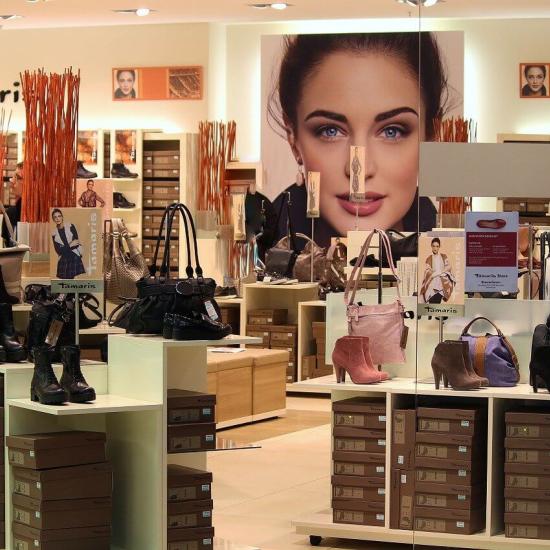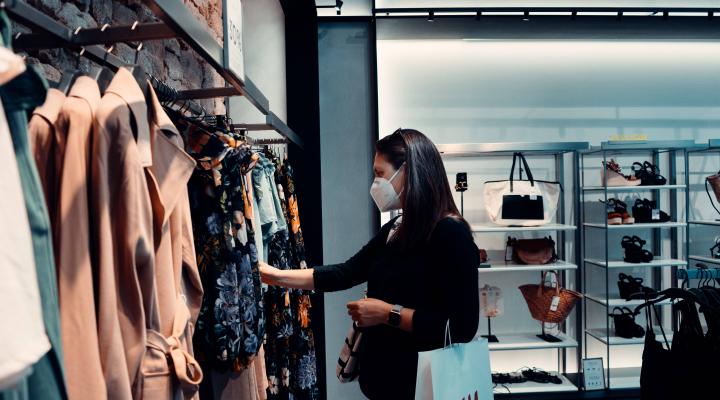Before Covid-19 struck with such vengeance, the retail industry globally was already in a state of accelerated and extremely disruptive change.
This was the result, although not exclusively so, of already transformative impacts of technology in general and digital connectivity in particular. Yet the additional effects of the global pandemic have been very unevenly felt across the retail industry.
The forest fire of the pandemic is felling the weakest trees - most obviously, physical store-based retailers in discretionary spend categories, as their stores have been forced to close in lockdown. Many such businesses have been unable to survive, already hamstrung with severe ‘underlying health issues’, a sad phrase in this saddest of times. For other retailers, Covid-19 has created opportunities to rapidly scale up operations to meet previously unseen levels of shopper demand, online retailers with direct to home fulfilment being the clearest example.
Few retailers believe that the world will ever return to the old norms of the pre-Covid-19 age. They are right because consumers and shopping behaviours have been changed irrevocably by the pandemic.
As shoppers continue to sustain high levels of spending online, both the extent and role of physical stores must change, with significant implications for the vitality of traditional shopping places as well as for the commercial viability of property owners. And, as people continue to show a preference to work from home even after lockdowns ease, so the viability of retail business models based on the assumption of high traffic, very expensive, town and city centre locations may be seriously, perhaps fatally, undermined.
Extreme uncertainty
The immediate future will nevertheless continue to be defined by extreme uncertainty. Some of these uncertainties are close to home - how will shoppers want to shop and what will they want to buy?
But others are extremely difficult to resolve, particularly those related to public health - such as the restrictions on personal freedoms that will need to be maintained, once vaccines are deployed.
Yet, while the agenda for business leaders is enormously challenging, times of unprecedented change are, of course, also times of unprecedented opportunity for those able successfully to define and implement what may be uncomfortably radical transformation.
We suggest ten areas on which retail enterprise leaders need to focus in order to build necessary resilience into their enterprises and create transformed businesses that are better aligned to the new needs of the post-Covid-19 shopper:

1. Earn the trust of shoppers
In a world where trust in institutions and organisations can feel in short supply, retailers who are felt to be working in the best interests of their customers will surely be disproportionately rewarded with their loyalty. Never has embedding and living the right values felt more important. This will be as true at a global level as it is at a hyper-local one.
2. (Re) Focus on purpose
Those retail firms that have endured are driven by a strong sense of purpose: that they exist to do more than purely transact with shoppers and make money for owners. The most admired retailers were all founded on a strong sense of purpose – to democratise affordable design (IKEA), to save people money so they can live better (Walmart), to promote the happiness of all of its customers (John Lewis). But it can feel that for some retailers a strong sense of purpose has been lost as financial goals came to dominate. All retailers will need a sharp focus on their deeper purpose if they are to earn or regain the trust of their shoppers.
3. Truly understand what shoppers want
Relatively less attention has been given to how shoppers want to engage with retailers. This needs to change. Retailers must be willing to move a long way from their historic roots and shopper engagement practices to secure their futures. Shopper behaviours have changed far more quickly than would have been thought possible before the pandemic and retailers must identify these changes, strip out the noise, understand how they will play out and rapidly reorganise their businesses accordingly.
4. Organise around the shopper
For many retailers, greater attention needs to be given to organising the enterprise around the shopper rather than according to operational convenience. For some, online engagement will need to be ramped up considerably and very quickly. For example, in UK department store retailing, John Lewis is implementing plans to close stores opened as recently as five years ago and has a target of 60% of sales from online channels. Others will also need to sharply accelerate existing store closure plans alongside revisiting the purpose and configuration of any remaining physical stores. Stores must reassure shoppers that they are safe environments whilst encouraging them to engage with rich in-store experiences.
5. Deliver on the promise of truly frictionless shopping
Contactless shopping is perhaps the critical component of frictionless shopping experiences, serving to both reassure shoppers around personal safety as well as delivering on their convenience expectations. At least some of the technologies deployed in the much-cited Amazon Go staff-free grocery stores seem certain to have wider applications in other retail settings also.
6. Emphasise meaningful human connections
If some good comes out of the terrible human tragedy of Covid-19 it is surely in a welcome return to notions of community, society and co-dependence. In a retail setting, human connections do not need to be solely person-to-person – but if they are not, then they certainly need to be made to feel human in ways which treat the shopper as a person and deliver humanising experiences.
7. Rethink supply chains
The global nature of the pandemic has starkly shown the emphasis that must be given to the reliability of supply rather than purely to its cost, if greater resilience is to be baked into retail businesses. For some retailers this will mean sourcing some products closer to the locations of demand. If more emphasis is placed on resilience over cost, the price of some products may have to increase, in which case shoppers will in turn have to re-evaluate the trade-offs that they are willing to make. The challenge for retail business leaders is both to understand what these trade-offs look like and to embed suitably reconfigured supply chains and sources of supply into their enterprises.
8. Embed flexibility
In common with other sectors, the retail workforce will become still more geographically dispersed, especially for those in support roles. Creating strong and cohesive teams from individuals who are no longer physically working together can only be delivered by having both the right organisation architecture and, more importantly, the right company culture and ethos. Flexibility also extends to decision-making. It is notable that the most rapidly and effectively implemented operational responses to the pandemic came not from the retail C-suite but from the front line. This points to the need for distributed rather than hierarchical decision-making, encouraging independence of thought and authority of action, but within a framework such that uber-delegation does not become anarchy.
9. Build in bandwidth
Retail enterprises need management teams that have the capacity to manage in both the long as well as the near term. Additional bandwidth means giving the right people the right amount of time, resource, support and incentives to properly plan, and provide operational contingency, for times of continuing uncertainty.
10. Develop more agile leadership approaches
The most successful retail leaders will be those who are able to be effective in environments of uncertainty and ambiguity, who are comfortable with collaborative decision-making, multi-disciplinary working and a willingness to encourage imaginative solutions and ideas from talent throughout the organisation. They also need to shape organisations which have the agility to both respond quickly to new challenges as they emerge and to realise the considerable opportunities that are created by extreme and disruptive change.
...retail leaders and their enterprises must be adaptable, resilient and driven by a deep sense of purpose...
If retailers are to secure their future they will have to be willing to let go of many conventions that have defined their past - yet which went to the very heart of how retail businesses viewed themselves and the way they engaged with shoppers. As they emerge into the ‘next’ normal of a Covid-19-scarred world, retail leaders and their enterprises must be adaptable, resilient and driven by a deep sense of purpose, with flexibility of thought and resourcefulness.
This is a challenging agenda, with rich rewards for those who succeed - but with terminal consequences for those who do not.
This article is drawn from the 2nd edition of Navigating the New Retail Landscape: A Guide for Business Leaders, by Alan Treadgold and Jonathan Reynolds, published by Oxford University Press in November 2020.




